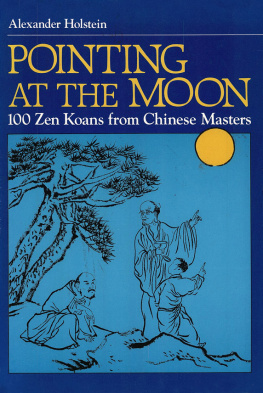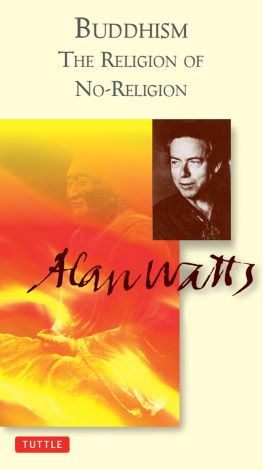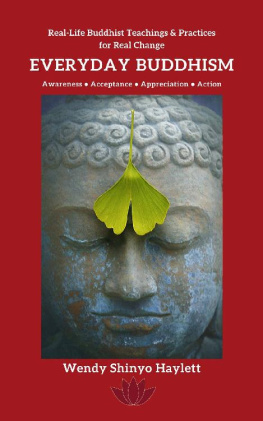Twelve
"Not doing wrong"
I would like to continue our discussion of right and wrong. I think it is a very important problem. I think the problem of what to do in our lives is the central problem of philosophy, of religion and of life itself. Most religions regard morality as a matter of obeying the moral law of God. It is thus a spiritual problem, a problem of conscience, a problem of good thought versus bad thought. Buddhism takes a very different view of the problem. Morality, from the Buddhist standpoint, is not a matter of right thought but of right action. Right and wrong are not decided in the mind but in the real world.
The Buddhist attitude toward moral problems is thus not spiritual or idealistic. It is very practical and down to earth. Such a practical attitude may disturb some people who feel that questions of moral action must be resolved in the mind, but in the mind morality has no substance or reality. It is only in the real world of action that morality itself becomes real. We may think countless good and pious thoughts, but if our actions are not right, such thinking is absolutely useless. This attitude may seem rather harsh, but I think we need such an attitude if we are to learn how to live.
Master Dogen expressed the Buddhist attitude toward morality in many ways. One chapter of the Shobogenzo is titled "Not Doing Wrong." It begins with these words: "The ancient buddhas said, 'Don't do wrong, do right. [Such conduct] naturally purifies the mind; this is the teaching of all the buddhas.' " The emphasis in these sentences is on doing. Not doing wrong. Doing right. Later in the same chapter, there is a story about a man named Rakuten Haku. He was a famous poet who studied Buddhism under Master Choka Dorin. One day he asked his Master, "Just what is the great intention of the Buddha's teachings?" Master Dorin replied, "Not doing wrong. Doing right." Astonished by the simple answer, Rakuten Haku said, "If that is so, even a child of three could speak such words!" Then Master Dorin replied, "Even though a child of three can speak this truth, an old man of eighty cannot practice it." Here again we find the emphasis on doing as opposed to thinking. From the Buddhist point of view, thinking about right and wrong is utterly different from practicing right and wrong. To think is only exercise for the brain. To practice right and wrong is our life itself.
This attitude becomes very interesting when we consider the precepts. The precepts are rules for behavior. They tell us what to do and what not to do. If knowing and doing are so different, what are we to think of the precepts? Can intellectual standards guide our actions? This is an important question. To understand the Buddhist answer, we should first of all know what the precepts are. We should study their concrete characteristics and consider their practicality in our daily lives. Then we will be able to understand the relation between Buddhist morality and the precepts and thereby find the true meaning of the precepts in our lives.
To understand the precepts we should first recall their origin in India. As the Buddhist community, or Sangha, grew and evolved, the simple rules and guidelines originally suggested by Gautama Buddha were amended and supplemented in an effort to account for the increasingly diverse and complicated situations encountered by the community members. As the rules multiplied, it became more and more difficult to act freely and directly. Every aspect of community life was soon regulated by some rule or other; at one point there were 250 rules for monks and 350 for nuns.
This situation was, in part, responsible for the emergence of Mahayana Buddhism. Many priests and lay followers felt that the excessive reliance on rules and precepts had stifled the original spirit of Gautama Buddha's teachings, and so, about four hundred years after his death, they broke away from the order of the elders and established a new order. In that order, the ideal of the Bodhisattva became very important. A Bodhisattva is a person who recognizes the Truth of Buddhism intuitively and devotes himself to its realization within the context of his everyday life. In such a life, rules for conduct had to be rather broad and flexible in order to be workable. So the great mass of rules and regulations which had accumulated were summarized into sixteen fundamental precepts. Those sixteen precepts became known as the Bodhisattva precepts; receiving them became the entryway to the Buddhist life of action in the real world.
The sixteen precepts are divided into three groups: the three devotions, the three universal precepts and the ten fundamental precepts. The three devotions are devotion to Buddha, Dharma and Sangha. Buddha refers first of all to Gautama Buddha.
As Buddhists, we feel tremendous devotion to the man who attained the Truth twenty-five hundred years ago, who established the Truth as a religion, and who taught his followers the method to find the same Truth in their lives. The Truth has been realized by many people since Gautama Buddha's time. They were all Buddhas. They all found the Truth through their own efforts. They passed the Buddhist teachings down through the centuries to our own time. We are very grateful to them. When we devote ourselves to Buddha, we are devoting ourselves to all the Buddhas of the past, the present and those yet to come: the Buddhas of the three times.
Devotion to Dharma is devotion to the universe itself. The universe has its order, its beauty, its rules. As Buddhists, we seek to enter into the order of the universe itself. We devote ourselves to that order. We devote ourselves to the rule of the universe. This is devotion to Dharma. Devotion to Dharma is the foundation of Buddhism.
Devotion to Sangha is devotion to the monks, nuns, laymen and laywomen of the Buddhist order. Gautama Buddha taught us to honor our companions in this Buddhist life. He taught us to devote ourselves to the community, or society, of those who are seeking the Truth.
The second group of precepts are the three universal precepts. The first is the observance of rules. Every society has its rules. If we fail to follow the rules of our society, our lives will be disturbed. So as Buddhists we should observe the rules of society.
The second universal precept is called the observance of Dharma. Dharma is the rule of the universe. To observe the rule of the universe is to act appropriately in all situations. It is, quite simply, to do right and not to do wrong. Thus, the observance of Dharma could be called the observance of morality. There are many social rules, but we need to follow a morality which transcends the social situation. We need to follow a morality based on the rule of the universe itself.
To work for the salvation of all living beings is the third universal precept. Buddhism teaches us that we are part of the universe. We are not isolated entities but elements of a grand system, a system which is reflected in every small part, in every being. This means that all beings in the universe share a certain quality or essential nature, a nature which cannot be named or defined. So if we are to express our true nature as human beings, it is natural for us to care for that which we have in common with all other beings in the universe. It is natural for us to work for the salvation of all living beings.
The devotions and the universal precepts are very wide and inclusive, but perhaps they are too abstract. So there are ten more precepts. These are also condensed or summarized, but they have a very concrete nature. They are the ten fundamental precepts.
- Don't destroy life. We all have life. Life permeates the universe. In a sense, it is the universe itself. To destroy life is thus to destroy a part of the universe, a part of ourselves. We should not destroy that of which we are a part. We should not destroy life.









